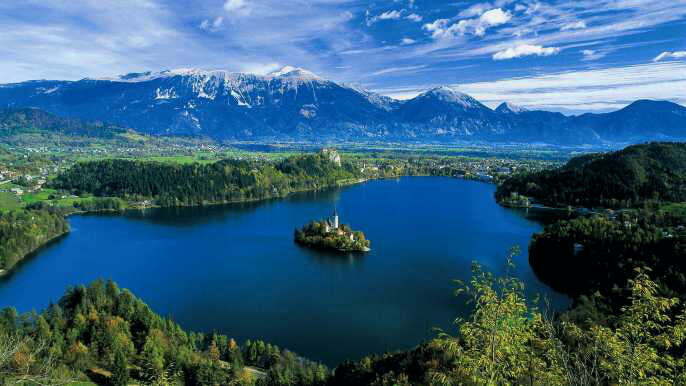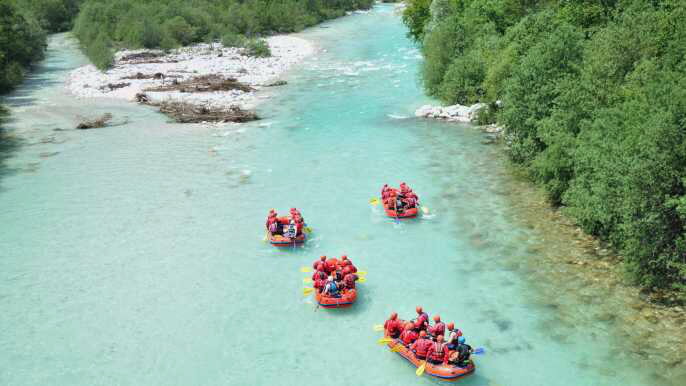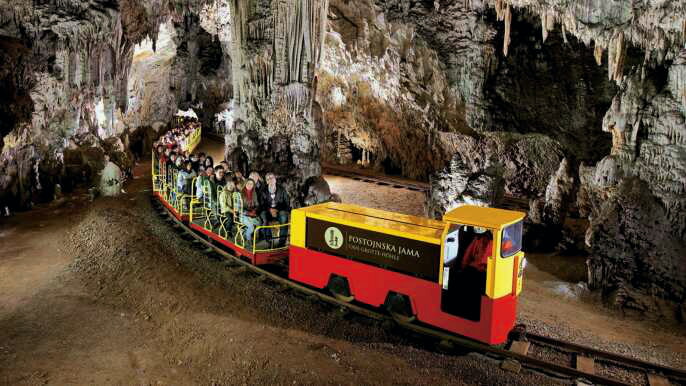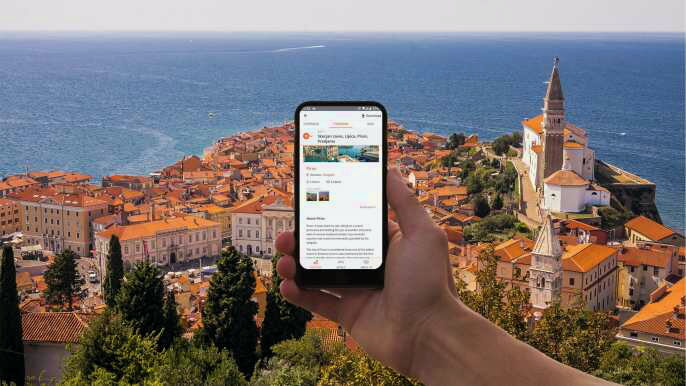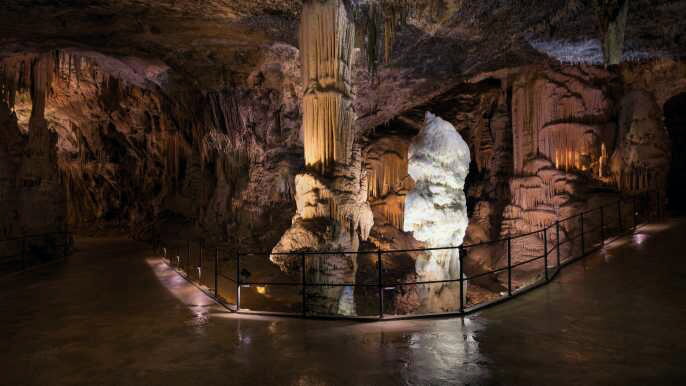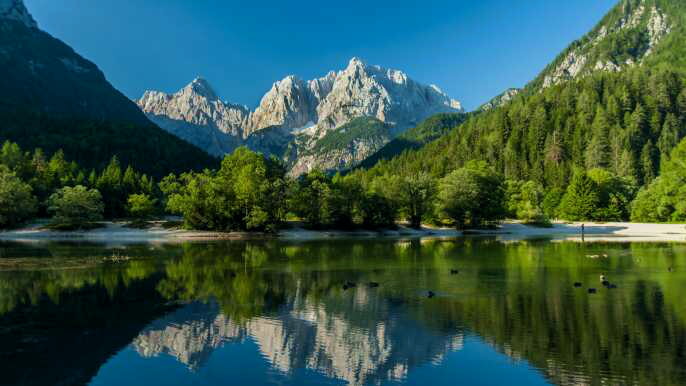Whether you're planning a trip to Slovenia or you just love travel, there are plenty of things to see and do in Ljubljana. You'll find a variety of museums, green spaces, and a bustling university population.
Old Town
Known for its picturesque riverside streets and colourful 19th-century buildings, Ljubljana's Old Town is one of Slovenia's most popular tourist destinations. This green capital has four distinct seasons and is best visited in the months of May and September.
Aside from being an excellent place to wander around, Ljubljana is also home to a number of lovely restaurants. The food here is typically based on Slovenian classics and uses ingredients that are both fresh and authentic. The restaurant menu is divided into sections such as meat and fish, and is designed to offer a range of dishes.
One of the most famous landmarks in Ljubljana is the Three Bridges of Ljubljana. This Baroque church is reminiscent of the Il Gesu church in Rome. This is the biggest tourist attraction in the city.
Another popular place to visit is the Ljubljana Castle. The castle is located on a hill and can be accessed via a funicular.
The Ljubljana Old Town is a pedestrian zone. Pedestrians are allowed to roam the narrow cobblestone streets. It is safe and fun to stroll around. Alternatively, you can hire a private car or bus. You can also use the Kavalirs, a free, electric vehicle that can transport up to five people.
During the Middle Ages, seven fires erupted. The oldest surviving architecture in the city is from the Roman period. In the second half of the 12th century, urban settlement began. The formerly separated parts of the city were unified and got an outline in the middle ages.
Aside from the Ljubljana Castle and the Three Bridges of Ljubljana, there are other must-see sites. These include the National and University Library of Slovenia, the Robba Fountain, and the Krizanke Summer Theatre.
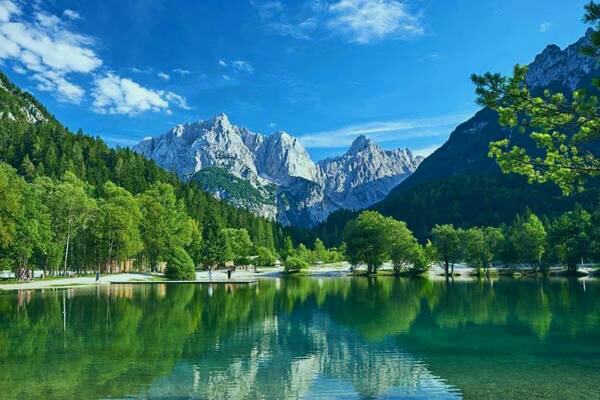
Central Market
Located in the heart of Ljubljana, the Central Market is one of the most popular places in town. It's a place to find fresh produce and meet locals. You can buy meat, fish, cheese and much more from stalls that line the river.
Whether you're looking for a gift for a friend, or for yourself, you'll find a variety of souvenirs and gifts in the market. You can also buy honey and other local products. The market offers a wide selection of fresh fruit and vegetables, and many stalls are dedicated to selling homemade bread, oil, and wine.
The Ljubljana Central Market is also home to a number of catering establishments. Visitors can stop by the ice cream kiosks for a delicious local treat. The market is open four times a year, so there's plenty to see.
The market was designed by acclaimed Slovenian architect Joze Plecnik. It has a colonnade that features classical columns and semicircular windows. There are also food stalls, which sell a variety of Slovenian delicacies.
You can also find traditional wooden Slovenian products. You can purchase beeswax candles, votive candles, and chocolates. You can also find a milk vending machine and a bakery. The market also has a covered section, which is climate controlled. You can also find various types of cookies and dried fruits.
The market also has a wide variety of flowers. There are also a number of stalls that sell honey, and some vendors even let you taste the honey.
There are also some stalls that sell struklji, a typical Slovenian pastry. Several stalls offer ice cream, and you can also buy chocolates.
The Central Market is open every day, except Sundays. It's a great place to get fresh produce, talk to the sellers, and enjoy the vibrant atmosphere.
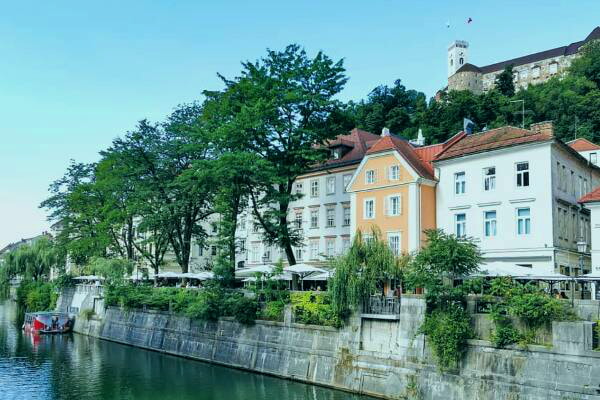
Museum of Illusions
Located near Ljubljana's Old Town, the Museum of Illusions is an immersive museum that presents almost 40 optical illusions and holograms. There are two floors, which feature fun interactive exhibits. The museum is open daily from 9 AM to 10 PM.
The museum includes a photo room, where the images change in front of your eyes. It also has an endless light show. There is also a Vortex Tunnel, which is a series of tunnels that rotate everything. It is a great place for kids to learn about balance.
There is also a Smart Playroom, where kids can participate in brainteasing games. There are enigmas, didactic-logical games, and puzzles. The museum is fun and educational for all ages. There are also babysitting services available for children under 2. It is a great way to spend an hour or two.
The museum is free of charge, but guided tours are available for a fee. Visitors can also go to the castle courtyard.
The Museum of Illusions is a great way to spend an afternoon. It is also a good choice for special events. It is a fun place to take a rainy day. It is also a great place to visit with friends. If you are in Ljubljana for a long weekend, you might consider taking a trip to the Museum of Illusions.
The museum is located within walking distance of Ljubljana's Old town. There are plenty of restaurants and shops in the area. The Museum of Illusions is open Monday through Sunday. It costs EUR11 for adults and EUR8 for children. The museum is a great place to visit when you are looking for something new.
It is located less than 2 kilometers from the city center. The apartments offer free Wi-Fi and a dining area. There is also a fully equipped kitchen. The bathrooms have hair dryers and bidets.
Joze Plecnik's footprints
During the period of 1895 earthquake and subsequent reconstruction, Slovenian architect Joze Plecnik created a number of landmarks in Ljubljana. These include the Central Market and Franciscan Church.
In 1921, he returned to Ljubljana to renovate the city. He worked on a range of projects including the Trian bridge and the Belvedere pavilion at Villa Bled. He was also involved in the renovation of the Preseren Theater in Kranj.
Plecnik was a prolific designer, and his signature style can be seen in many places in Ljubljana. His design for the Triple Bridge is one of the most famous. He also designed the facade of the National and University Library. It features a staircase with 32 marble pillars. It also contains chandeliers and stone elements.
Another of his most important works is the Ljubljanica River Barrier. This structure was constructed between 1939 and 1944. It is located near the Cukrarna building. It serves as a landmark and connects the two banks of the Ljubljanica River. It is a very rare structure in the world.
In addition to Plecnik's work, his house in Trnovo is also worth visiting. It is considered to be a cultural monument of national importance. It is now a museum and academic centre for Plecnik's work. It was purchased by the City of Ljubljana in 1972. It underwent an integral renovation between 2013 and 2015. It now includes a study center, presentation areas and educational programmes.
It is possible to tour Plecnik's home on a free self-guided audio tour. The audio is available on Android and iOS devices. You can also download the Plecnik's Ljubljana app. It is a free resource and offers an immersive look at Plecnik's Ljubljana.
Ana Desetnica international street theatre festival
Taking place in the summertime, Ana Desetnica is an international street theatre festival in Ljubljana. This event has been running for over 20 years, and it has become an important part of Slovenia's cultural life. It is a festival that attracts performers from all over the world.
It is a festival of street theatre, dance, and circus performances. There are about 37 shows to see in Ljubljana, and another 12 shows are scheduled for the rest of Slovenia. The festival will also feature a ski odyssey and aerial spectacle.
A large number of performers ask for donations to fund their performances, but the festival is free to attend. Aside from the performances, there are many other events going on in Ljubljana during the summer. For information on these events, check the city's tourism website. There is a calendar of summer events as well.
The festival includes a diverse range of performances, including circus skills, illusions, and site-specific performances. There are also performances geared towards children and adults. Some of the shows include music, improv, and dance.
Ana Desetnica also offers opportunities to young practitioners to travel abroad. They also engage in various networking projects at the European level. These include the Eunetstar and Meridians projects.
The summer season in Ljubljana is a bustling and exciting time. It's also the most popular time for outdoor events. There are plenty of summer programs, including ballets, plays, and concerts. The city's tourism website has a calendar of events and brochures for the upcoming events.
The annual Ana Desetnica festival takes place in over ten Slovenian towns, and half of the events will be held in Ljubljana. This year's festival will include a ski odyssey, aerial spectacle, and a performance by the Ana Monro Theatre.


